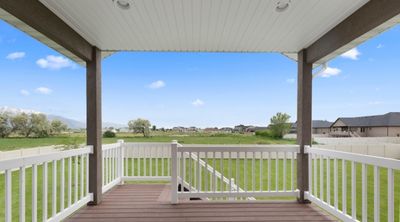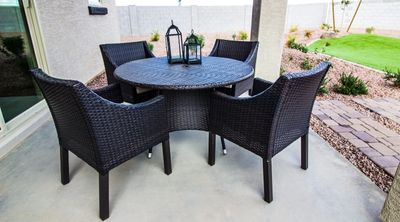The home’s outdoor area is essential to a homeowner’s lifestyle because it is a place where they can relax and enjoy their surroundings. It is a great place to entertain guests and spend time with family and friends. Additionally, homeowners can use their outdoor space to grow plants and vegetables, adding beauty to their property and providing fresh produce.
Planning for Durable Outdoor Spaces
There are a few things to consider when planning the perfect home outdoor space:
- It is essential to choose the correct location. The home’s outdoor amenities should be in a safe and secure area, away from busy roads and other hazards. It should also be close to the house so homeowners can easily access it.
- Homeowners must decide what type of furniture and accessories they want to use in their outdoor space. They should choose items that are durable and easy to maintain.
- Creating a budget for the home outdoors project is essential. It will help ensure that homeowners do not overspend on their projects.
- Once the home outdoors is complete, it is vital t take care of it, so it remains in good condition.
However, keeping it in good condition will require you to protect your backyard project from the elements. Harsh weather can damage your outdoor furniture and accessories, so taking proper care of them is essential. Additionally, you will need to maintain your plants and vegetables regularly to remain healthy.
Three Tips to Design a Resilient Outdoor Area
Here are a few tips to keep your home outdoors in top condition.
1 – Roof Extensions
When you have a lot of furniture in your backyards, such as a patio set, gazebo, or hammock, it’s essential to have a roof extension to cover it. Thus, you will protect it from the elements. A roof extension will keep your furniture from getting wet during rainstorms and help preserve its color and condition. Additionally, it can provide shade during hot summer days, which will help keep you and your guests cool. Roof gardens have many benefits, so they can be a worthwhile investment.
You can choose from a few different types of roof extensions. The most popular type is the gabled roof extension. This type has two sloping sides that meet at a ridge in the middle. It is versatile and can be used in almost any type of home. Another popular type of roof extension is the hip roof extension. This type has four sloping sides that meet at a ridge in the middle.
If you don’t want a permanent roof extension, you can opt for a retractable one. This type of roof can get opened and closed as needed, providing you with the flexibility to use it when you want. It’s an excellent choice if you live in an area with unpredictable weather conditions.
If you’re interested in installing a roof extension on your home, be sure to consult with a professional roofing contractor. They will be able to help you choose the right type of roof extension for your home and will provide you with an estimate for the cost of installation.



2 – Invest in High-Quality Furniture
Your outdoor furniture is subject to wear and tear from the elements, so investing in high-quality pieces will be essential. Outdoor furniture is available in various materials, including wood, metal, wicker, and plastic. Each material has its advantages and disadvantages. For example, wooden furniture is durable and looks great but requires more maintenance than other materials. Metal furniture is also durable but can rust over time. Wicker furniture is lightweight and easy to move but can get damaged in strong winds. Meanwhile, plastic furniture is the most affordable option but doesn’t look as lovely as other materials.
When choosing outdoor furniture, consider how often you’ll use it and where you’ll store it when it’s not in use. If you plan on using your furniture regularly, choose easy-to-clean and maintain pieces. If you only use your furniture occasionally, opt for more decorative details. Whichever type of furniture you choose, invest in high-quality pieces that will last for years.



3 – Waterproof Decking
If you have a deck or pathway in your backyard, it’s important to waterproof it to protect it from the elements. Waterproofing your patio will extend its lifespan and prevent it from rot, mold, and mildew. It will also make it easier to clean and maintain.
There are a few different options for waterproofing your deck. The most popular is to use a sealant. Sealants provide a barrier between your deck and the elements, protecting it from water damage. Another option is to install waterproof decking material. This material is designed specifically for decks and has a built-in water-resistant barrier.
If you’re interested in waterproofing your deck, you can partner with a company specializing in waterproof deck coatings services. They will be able to help you choose the right type of waterproofing for your deck and will provide you with an estimate for the cost of installation.



The Takeaway: Your Outdoor Space Is an Extension of Your Home–Take Good Care of It
If you want to extend the lifespan of your outdoor furniture and protect it from the elements, you can do a few things. The tips above are only a few things you can do to protect your investment. Be sure to consult a professional before taking action to ensure you make the best decision for your home.





